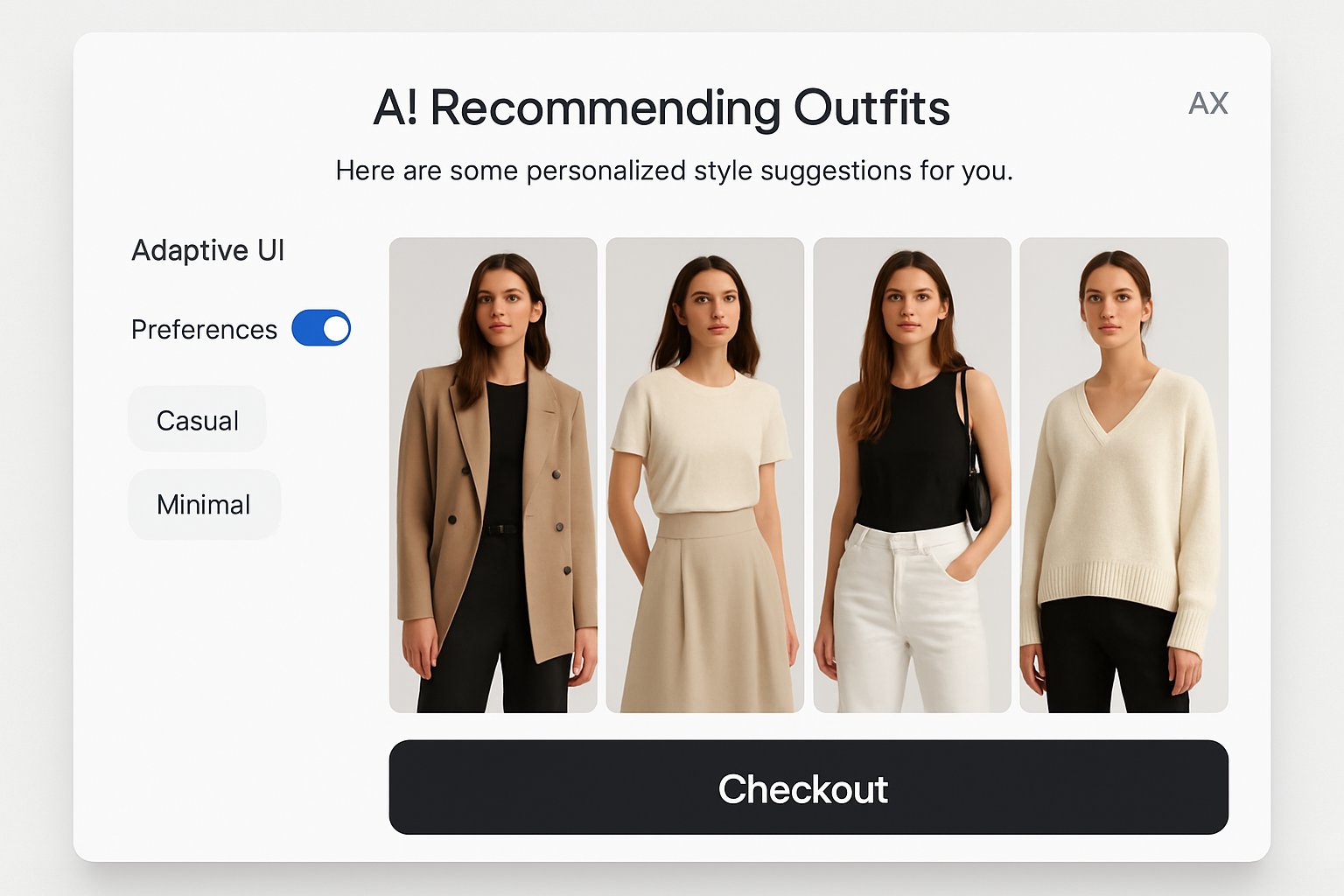
AI CERTS
15 hours ago
AI Style Intelligence Reshapes Fashion Retail Assistants
Moreover, analysts predict the global assistant market could surpass $37 billion by 2034. The fashion business therefore, faces an inflection point reminiscent of the mobile pivot a decade ago. Retail leaders must quickly decode the tools, risks, and economics driving this new shopping protocol. Therefore, this article maps the opportunity landscape and suggests next steps for brands and technology teams.
Surging AI Commerce Metrics
Adoption curves for conversational shopping accelerate at record speed. Furthermore, this momentum signals the dawn of AI Style Intelligence driven commerce. Adobe reports generative-AI referrals increased 1,300% between 2024 and 2025, surpassing social traffic growth. Precedence Research projects the global assistant segment to reach $37.45 billion by 2034. Meanwhile, AI-referred visitors browse longer sessions and view more pages, closing the conversion gap each quarter.

- Generative-AI referrals rose 4,700% YoY in July 2025 for some fashion categories.
- Virtual try-on can cut return rates by up to 30%, per market analyses.
- Google now indexes tens of billions of fashion listings within its Shopping Graph.
- ChatGPT pilots instant checkout with Etsy and Shopify merchant cohorts.
Consequently, data confirms that discovery, fit confidence, and payment convenience are converging. These metrics illustrate why investors scale funding and why incumbents rush feature rollouts.
Such momentum introduces both promise and complexity. Therefore, understanding the technology stack becomes the next logical step.
Core Technology Building Blocks
Several technical layers power this retail revolution. Multimodal vision-language models enable image queries such as “show me boho dresses under $150.” Visual search pipelines match the request against cloth embeddings in milliseconds. Additionally, virtual try-on systems drape garments on user photos, reducing uncertainty around fit.
Moreover, fashion copilots harness these capabilities to deliver dynamic styling suggestions. In contrast, retail personalization engines fuse clickstream data, product attributes, and conversational context to recommend complete looks. Consequently, experiences feel closer to chatting with a trusted human stylist.
At the core, AI Style Intelligence orchestrates these layers, choosing the right model, prompt, and data source for each request.
These building blocks create modular, extensible platforms. However, technology matters little without strong ecosystem participation, which we examine next.
Leading Industry Players Today
Google leads with AI Mode, virtual try-on, and an agentic checkout using Google Pay. Meanwhile, OpenAI tests instant buy flows inside ChatGPT, supported by an emerging Agentic Commerce Protocol. Amazon counters with “Buy for Me” and Alexa Plus enhancements. Additionally, Shopify embeds Sidekick across merchant dashboards, while Daydream and Gensmo champion fashion-first chat commerce.
These vendors position fashion copilots as primary discovery layers. Furthermore, retail personalization engines give merchants granular control through APIs and knowledge bases. Consequently, brands gain new channels but also face new ranking algorithms.
Every initiative ultimately converges on AI Style Intelligence that can move from inspiration to purchase without friction.
The competitive map shows big-tech and startups attacking the same funnel. Nevertheless, upside depends on clear business outcomes, explored next.
Opportunities And Business Upside
Personalized discovery often drives higher basket sizes and loyalty. McKinsey reports executives rank personalization as a top digitization priority.
Furthermore, AI Style Intelligence enables one-to-one styling without human labor, lowering service costs. Retailers that pair fashion copilots with robust retail personalization engines capture rich zero-party data, improving future targeting.
- Higher engagement: Adobe notes longer session duration for AI-referred visitors.
- Fewer returns: Virtual try-on cuts logistics costs and emissions.
- Incremental channels: ChatGPT and Google recommendations arrive without paid ads.
Consequently, boards now ask how quickly AI Style Intelligence can translate these metrics into revenue growth.
Opportunities appear vast and measurable. Nevertheless, brands must balance optimism with a realistic view of emerging risks.
Challenges And Risk Factors
LLM hallucinations may misstate sizes, stock, or warranty details. Therefore, brand trust can erode quickly.
Additionally, biometric data used for virtual try-on triggers privacy obligations under GDPR and upcoming state laws. In contrast, agentic checkout introduces liability if an AI buys the wrong item.
Moreover, fashion copilots depend on accurate feeds, while retail personalization engines require consented data. Without governance, performance may plateau.
Failing to ground AI Style Intelligence in verified catalogs magnifies these threats.
Risks are significant but manageable with policy, testing, and transparency. Subsequently, strategic guidance can turn caution into competitive advantage.
Strategic Next Steps Ahead
First, audit data pipelines for accuracy, consent, and coverage. Secondly, integrate knowledge graphs that ground assistant responses.
Professionals can deepen skills through the AI + Everyone certification, which covers governance, prompt design, and ethical deployment.
Next, pilot fashion copilots within brand sites before extending to external platforms. Similarly, tune retail personalization engines with incremental A/B testing to track revenue per visit.
When launching new flows, embed AI Style Intelligence metrics inside executive dashboards. Moreover, assign ownership so AI Style Intelligence improvements receive consistent resourcing.
These actions create a defensible roadmap. Consequently, companies move from reactive experimentation to deliberate, scalable transformation.
Final Thoughts And Outlook
AI Style Intelligence now links discovery, confidence, and payment into one conversational thread. Furthermore, fashion copilots and retail personalization engines push the industry toward truly individualized commerce. Nevertheless, success rests on data quality, responsible design, and clear performance targets. Brands that move quickly can capture new traffic, reduce returns, and delight shoppers. Therefore, explore certifications, experiment with guided pilots, and monitor regulatory updates. Take action today and turn intelligent styling into a sustainable advantage.



